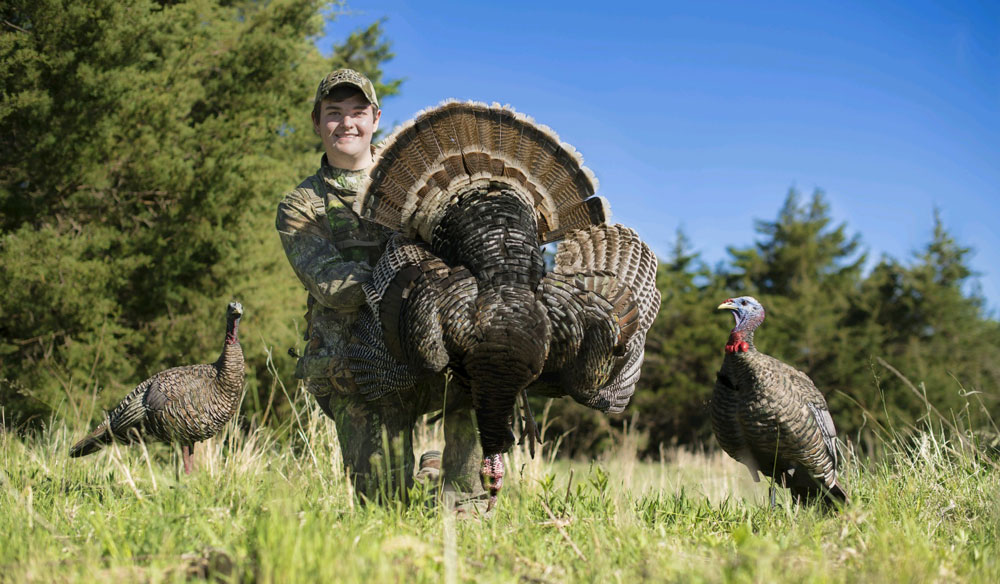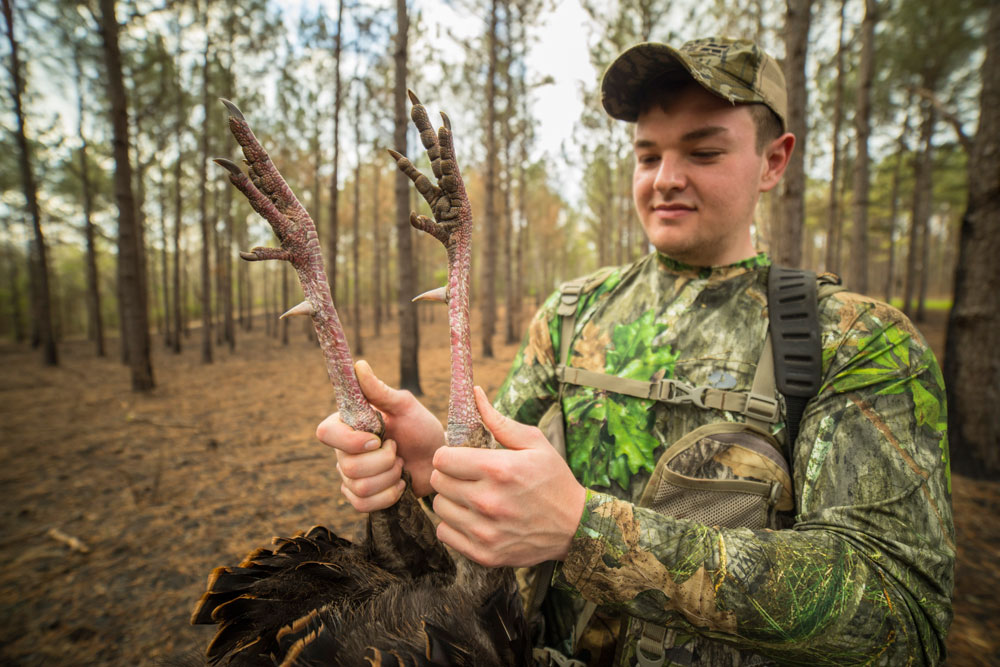Twenty-year-old Hunter Wallis of Greenfield Township, Pennsylvania, started hunting turkeys when he was 4 years old and won the 2018 Intermediate Division of the National Wild Turkey Federation Grand National Calling Contest. This was the last year for him to compete in the Intermediate Division. He won the Intermediate Division four times, and the Junior Division three times in the Grand Nationals. He also won the Senior Division of the U.S. Open, the World Junior Championship, the World Intermediate Championship, the Pennsylvania State Open in both the Junior and Intermediate Divisions, and the Open Pennsylvania Championship three times.
Hunter Wallis | Mossy Oak ProStaff

One of the toughest turkey hunts I’ve ever been on, without hesitation, is any turkey hunt in Alabama. The birds down there have been hunted for many, many years, and they receive a lot of hunting pressure. In the early season, you can have a sunshine one day, snow or hail the next day, rain the next day and high winds on the following day. So, when you put the weather and bad birds together, for me, some of my toughest hunts have been in Alabama.
For instance, a couple of years ago Jackson Woodson and I were hunting together in Alabama. We had hunted for three or four days, and we had heard turkeys gobble, but we never could get one to come to us. On one particular day, we had been working several gobblers that were together for several hours. As the time drew closer to noon, we started doing fighting and purring calls like two gobblers in a fight.
Finally, the gobblers broke and came in to where we could take them. We had seen these gobblers earlier in the morning, and the gobblers were chasing each other around. They seemed to want to fight each other. So, when we started acting like two gobblers fighting, this bunch of three longbeards moved toward us. Jackson and I both bagged a gobbler at almost the same time.
I think the easiest turkey for me to take is a Rio Grande turkey. The ones I've hunted seemed to be a little less cautious than an eastern gobbler or an Osceola gobbler. Don’t get me wrong. Sometimes Rio Grandes, like any other turkey, can be tough to call in, and other times they’ll run right over you. A lot of that has to do with the terrain. If you have a hill, a mountain or thicket between you and a gobbler, you often can find a good calling position and get closer to him, than if you're hunting open woods and pastures.
One thing we have to remember about all species of turkeys is that they're all individuals. Sometimes, you can have a relatively easy hunt with any of them, and other times they’ll make you think you’ve lost your mind. But generally, I don’t think the Rio Grande turkeys have had as much hunting pressure as the eastern gobblers have. Too, there's a lot more open land where you find Rios than there is in most of the East. I usually can find some type of terrain break, trees or bushes that I can get to without a Rio seeing me. So, I can call him in, but I guess any turkey that doesn’t listen to turkey calling from hunters just about every day of the week is going to be easier to take than the turkeys who get called to almost every day.
There’s certainly a difference in hunting Rio Grande turkeys and Eastern wild turkeys.



























